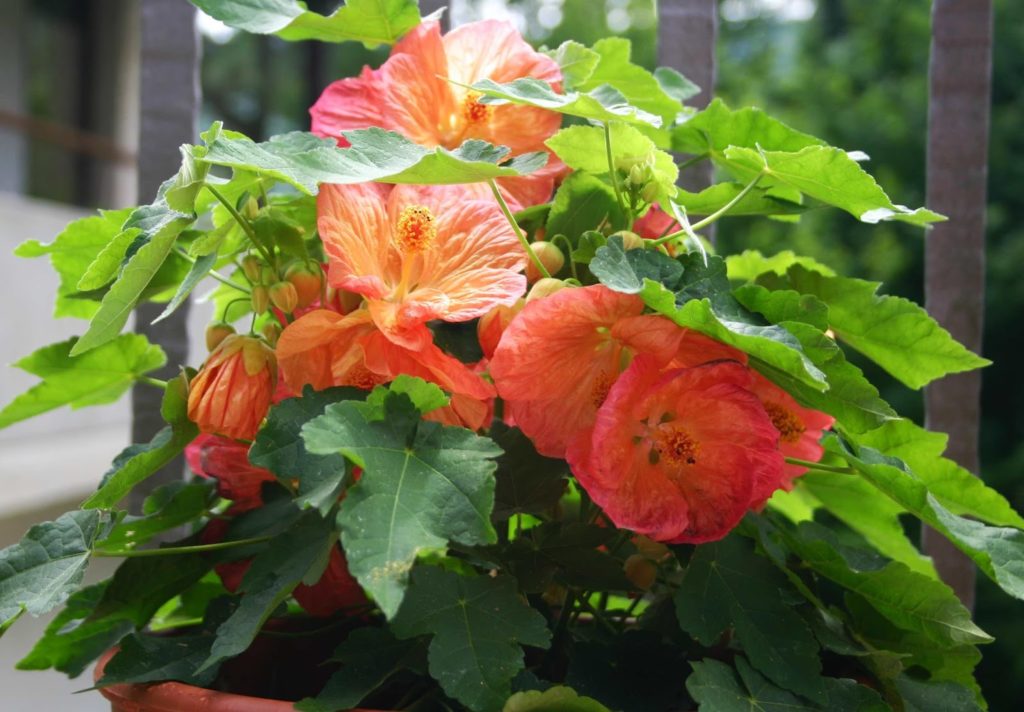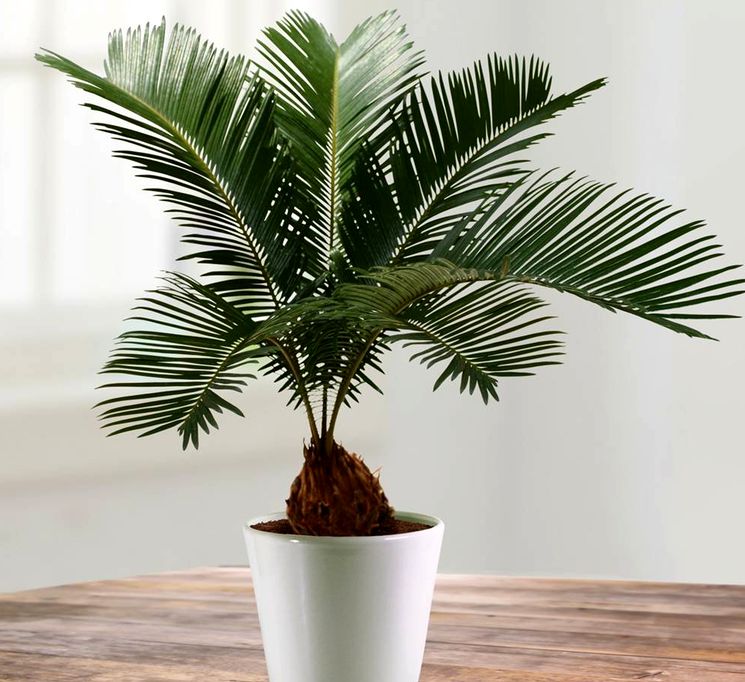Ehmeya is a plant with attractive decorative leaves and beautiful flowers that look like fireworks or a star. The foliage has an irregular shape, near the base it curls up in order to collect water in nature during rain. The essential substances for the flower come through the leaves from the air. It belongs to the Bromeliad family, therefore it blooms only once in a lifetime. The plant is distinguished by its ease of care and vitality; even novice flower growers can safely start it.
Content
What is interesting about this flower?
Under natural conditions, the flower grows in South and Central America. He selects the trunks of old trees, driftwood, sometimes stones and rocks.
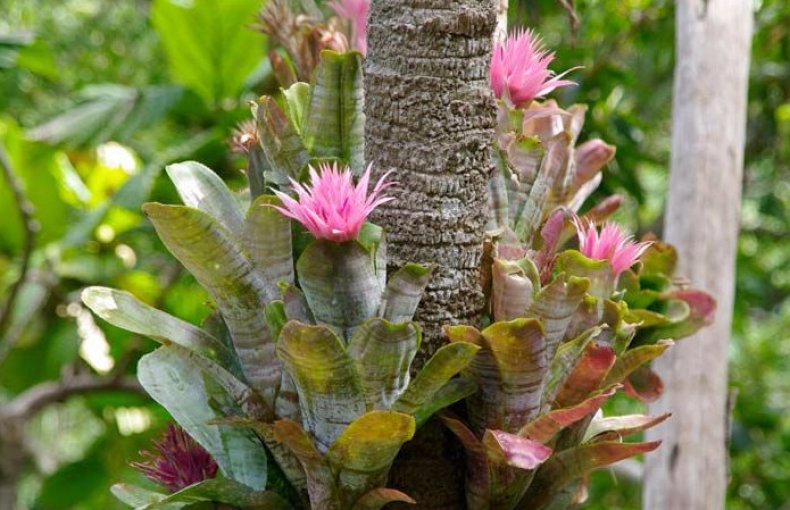
Ehmeya refers to moderately poisonous flowers. The most dangerous is striped ehmeya, so it should be kept away from children and animals, and all work should be done with gloves. At the same time, the flower releases certain substances that:
- calm the nervous system and improve sleep;
- speed up the process of food digestion;
- increase immunity;
- reduce the level of harmful chemical impurities (especially formaldehydes).
Astrologers claim that ehmeya is ideal for Aries.
Varieties with photos
The plant has more than 300 varieties. Many of them are used by home growers as they adapt well to indoor conditions.
Ehmeya two-row
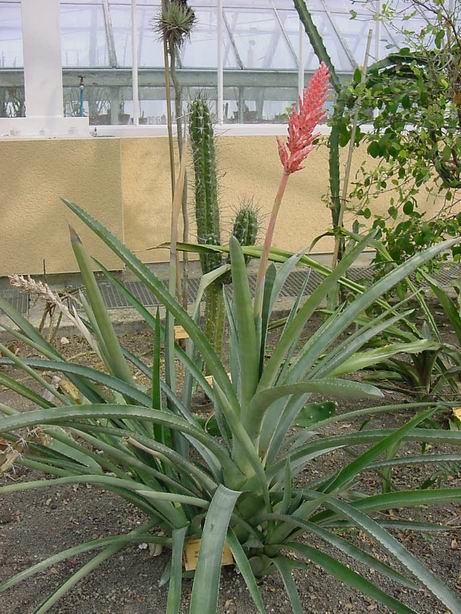
It is an epiphyte (grows on other plants), but can grow on the ground. Leaves up to 50 cm long and about 3 cm wide, pointed. There are brown spines at the ends. The flowers are purple.
Ehmeya sparkling
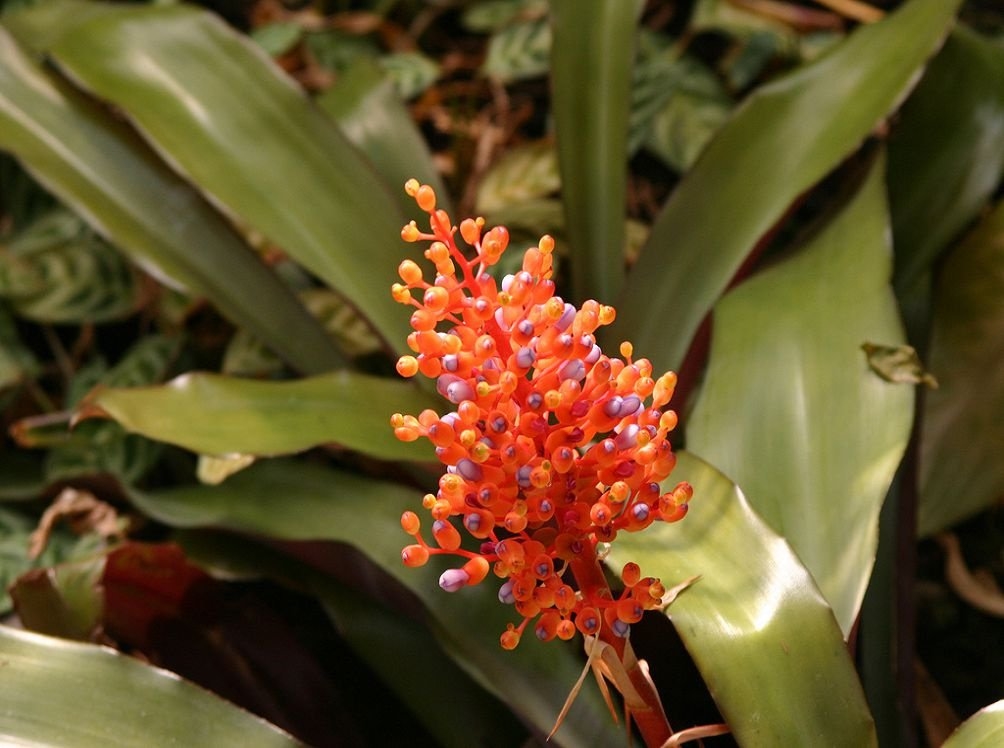
It is the most unpretentious. The leaves look like belts, 40 cm long and 6 cm wide. There are teeth along the edge. The upper side of the leaf is green, and the lower side has a purple-red tint. The buds are coral in color with a bluish top. In an inflorescence of 100 pieces.
Ehmeya striped (fasciata)
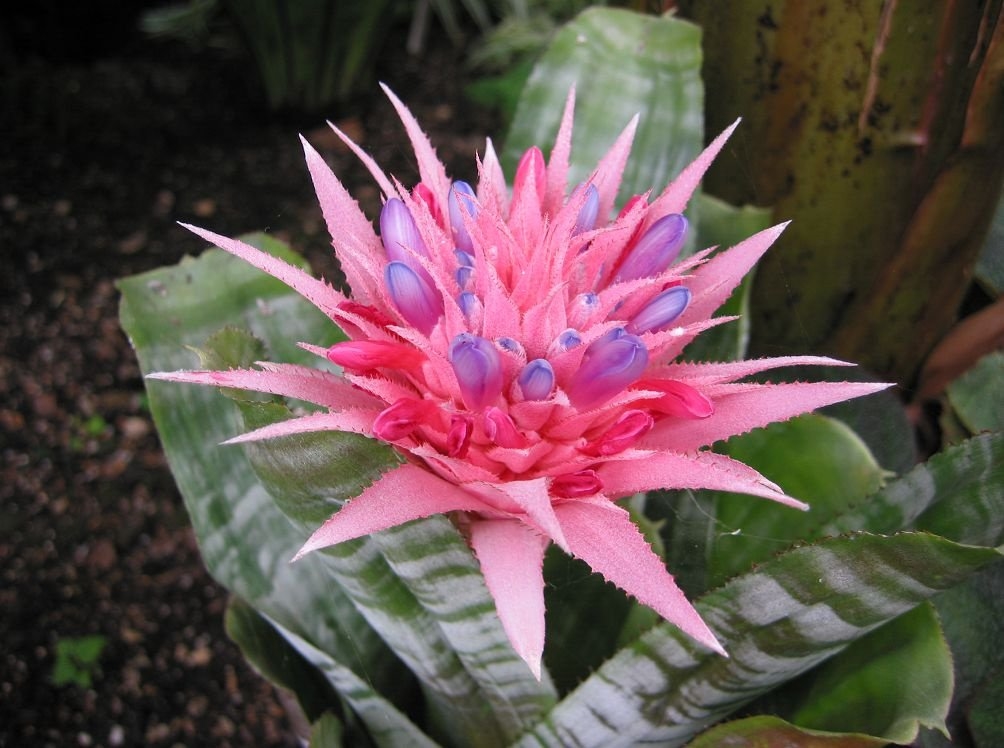
The fasciata has leathery foliage with marble stripes, looks like a belt. There are dark denticles along the edges. The flowers are red-blue. The leaves are poisonous.
Ehmeya Primera
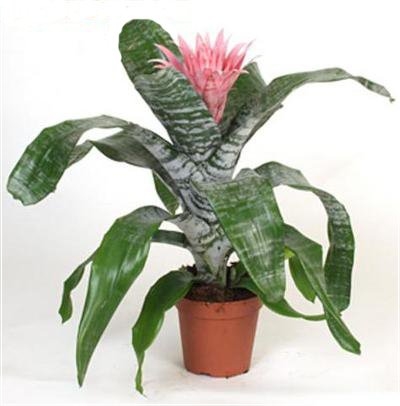
Ehmeya Example - one of the subspecies of striped ehmea. Leaves are hard. The height of the flower reaches 65 cm. The bract is pink, and the flowers are light purple.
Ehmeya Weilbach
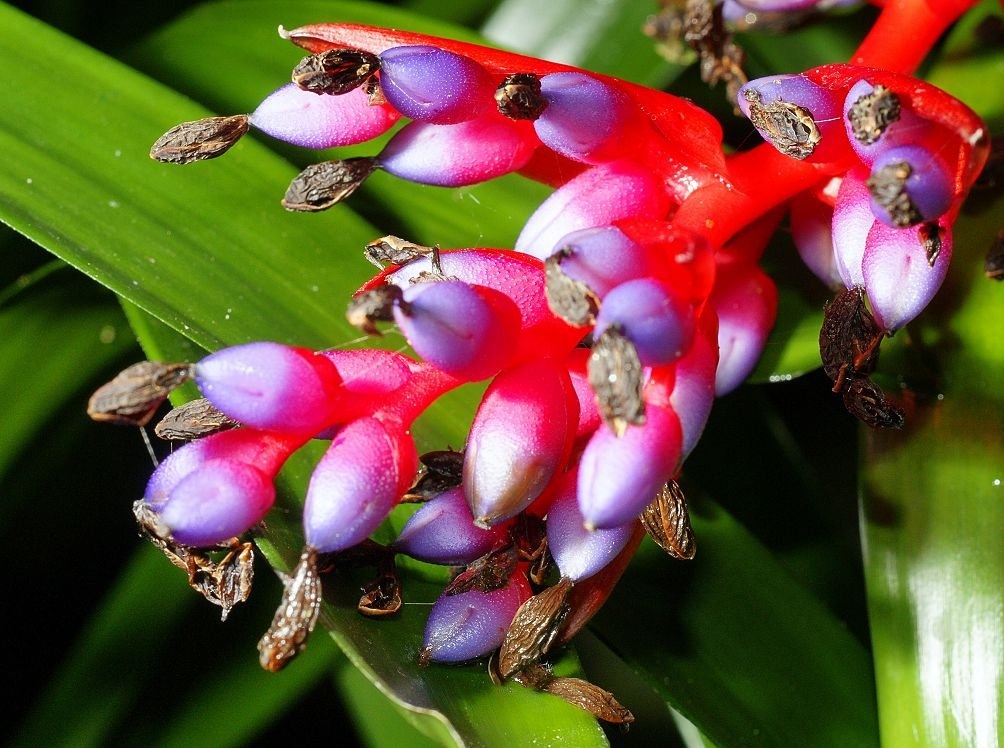
The length of a wide leaf is no more than 50 cm. Ehmeya Weilbach has smooth edges. Inflorescence in the form of a brush, no more than 35 cm long. Large bracts of scarlet color.
Ehmeya curved

The leaves are narrow (1.5 cm) and long (up to 40 cm). The inflorescence consists of red triangles and pink flowers.
Ehmeya Blue Rain
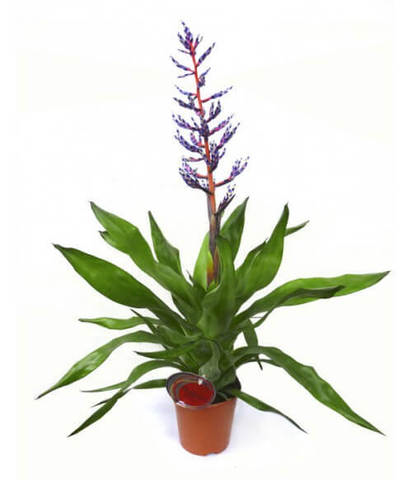
Blue Rhine has leathery, curved leaves. Bracts are colored light blue, turning into blue.
Optimal conditions of detention: table 1
Caring for echmea at home is not difficult, therefore, if the basic rules are followed, even a novice florist can handle the plant.
| Season | Humidity | Temperature | Lighting |
| Spring Summer | The ideal humidity level is 60%.It can stay in drier air for a short time, but constant spraying is desirable (in hot weather every day). The pallet can accommodate wet pebbles | The plant loves warmth. The optimum range is 20 to 28 degrees Celsius. The difference between night and day temperatures is beneficial to the plant. If ehmeya is constantly in the room, then it is recommended to do airing. But you can't make a draft | The plant is comfortable in bright light and in the shade (in this case, there will be no flowers). A bright diffused light from the west or east side will be more optimal. If the flower is placed on the south side, then during the active sun it is shaded. In summer it can be left on the balcony. Ehmeya curved prefers bright light, and ehmeya sparkling - shadow |
| Autumn winter | When the heating is on and the air temperature is above +20 ° C, the plant must be sprayed every morning. If the temperature is lower, then it is necessary to remove water from the funnel. It is recommended to wipe the leaves with a damp cloth | The temperature is considered normal from +14 to +18 ° C | From October to February, ehmeya is left on the windowsill. There is no need to create a shadow. |
Plant transplant
After purchase, ehmeya is transplanted if necessary. Only if the flower does not adapt, then a transplant is required.
The root system of the plant is shallow, so you need to choose a pot that is shallow, but wide. Drainage holes are desirable. The volume of the pot should be slightly larger than the entire rhizome. It is better to choose a plastic container as it is warmer than ceramic. To give stability, it is recommended to install it in a planter. In this case, when watering, it is necessary to pour water out of it every time.
The soil can be purchased from a specialist store. There is a special primer for Bromeliads. Such land is quite loose, it is good for water and air.
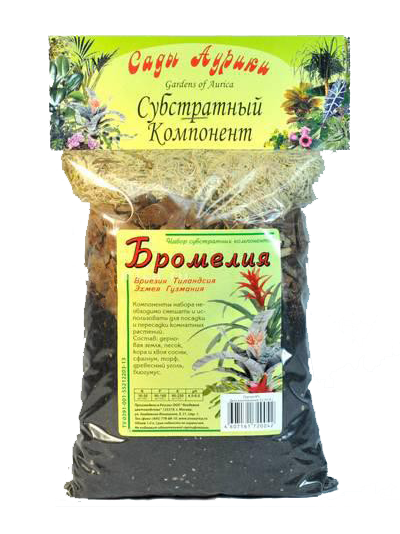
You can prepare the soil yourself:
- 1 part pine bark;
- 1 part chopped sphagnum;
- 1 part coarse sand;
- peat and horn shavings (to improve the structure);
- pieces of charcoal (to prevent mold growth).
There is another recipe:
- 1 part peat;
- 2 pieces of foliage earth;
- 1 part of a large flower.
Before planting, homemade soil must be sterilized (doused with boiling water or roasted in the oven).
Ehmeya is transplanted in the spring every 2-3 years.
Procedure:
- Pour drainage into the bottom of the pot with a thick layer. It is required, because the plant does not like highly moist soil.
- Fill up the soil to half of the container.
- Collect the leaves of the plant in a bunch at the base and remove the flower from their old container.
- Put the plant in a new pot and top up the soil.
- Place the pot in a shaded place.
- Do not water for the first 2-3 days, this will help the flower adapt faster.
Watering and feeding: table 2
Water is first poured into a rosette of leaves, and then onto the ground. Water for irrigation is used soft, previously settled. The temperature should be slightly higher than in the room. Strong overdrying and waterlogging of the soil should not be allowed.
The watering regime depends on the season and is described in the table.
| Season | Watering mode |
| Spring Summer | Water the plant abundantly and regularly (when the topsoil dries out) |
| Autumn | The number of waterings decreases |
| Winter | There is no need to water the plant if the room temperature drops below +20 ° C. The soil must dry completely between waterings. |
For the full development of ekhmeya, feeding is needed. The flower should be fed from March to October 2 times a month. For this, fertilizer for bromeliads is used (the recommended dosage is doubled). It is important to pay attention to the composition - it should not contain copper and boron, as they are toxic to ehmea.
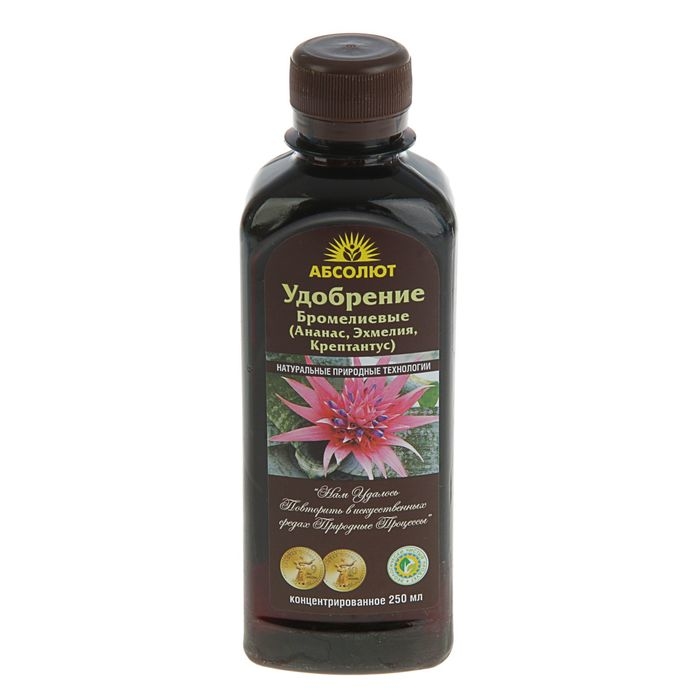
Top dressing is done immediately after watering. The solution can be sprayed on the leaves or poured into an outlet.
Some growers feed the flower during the dormant period. In this case, fertilizers are applied no more than 1 time in 1.5 months.
Flowering and rest
Ehmeya blooms only once. This happens from May to October.After flowering, children begin to appear, but the plant itself lives for about six months.
A plant grown from seeds will bloom after about 4 years, and from children - after 3 years.
The flowering itself lasts several months. At the same time, the flowers wither quickly, and the bract remains for a longer time. To increase the flowering period, you need to try not to wet the bracts during watering. After the echmeya has completely bloomed, it must be cut with a sharp pruner to the very base. In this case, the water should be removed from the outlet. Otherwise, the plant will start to rot.
Many growers are faced with the fact that ehmeya does not bloom. There are several factors that negatively affect this process:
- low humidity;
- deficiency or excess of sunlight;
- low room temperature;
- the presence of parasites or diseases;
- too big pot.
In these cases, it is recommended to ensure optimal parameters. In order to speed up flowering, experienced growers use the following tricks:
- Put an apple or orange near the ehmea. Cover everything with plastic wrap or plastic bag for 2 weeks. It is believed that the flower should appear in 4 months.
- In some cases, a temperature drop will help stimulate flowering. To do this, it is recommended to take the plant out to the balcony or where the temperature is slightly lower.
- Put some calcium carbide in the funnel. When water gets in, it starts to release a gas that promotes flowering.
Holidays at Ehmeya begin in the winter months. At this time, the laying of the future flower takes place. The temperature during the resting period should not be lower than +16 ° C. Water gently and infrequently. Spraying is more useful.
Errors in care and methods of their elimination: table 3
There are a number of mistakes that inexperienced owners can make that can lead to disease or death.
| Care errors | Cause | Remedy |
| The leaf turned sluggish or yellow | Water scarcity | Water the plant as soon as the top layer of the earth dries up. Do not allow the soil to dry out |
| The tips of the leaves dry | Insufficient air humidity | Ehmeya should be sprayed more often, especially during the heating season or heat waves. You can purchase a humidifier |
| The leaves turned brown | The flower is cold | Change temperature setting |
| Light brown spots appear on the leaves | It's a sunburn | Create shade for the plant from midday rays |
| The leaves have become not so bright, monochromatic | Light violations | Rearrange the plant in a place with bright but diffused light |
| Leaves rot at the base | Low room temperature combined with over-watering | Water the flower when the top layer is dry. In winter, carefully drain the water from the funnel. |
Diseases and pests
Due to improper care, the plant becomes weaker, which often becomes the cause of the development of various diseases.
In order to take the necessary measures in time, you need to regularly inspect the flower.
Leaf spot
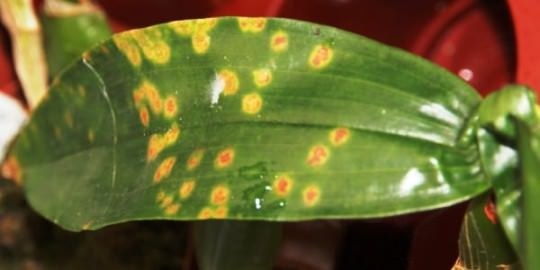
The leaf begins to become covered with small, round blisters, which are sometimes filled with fluid. After a while, dark brown stripes and fungal spores appear on them.
For treatment, fungicides (Fundazolone) are used. Treat the plant with this solution 3 times with a week break. If the flower is heavily infested, it is best to destroy it. As a preventive measure, it is necessary to avoid high humidity, regularly ventilate and monitor the lighting conditions.
Fusarium
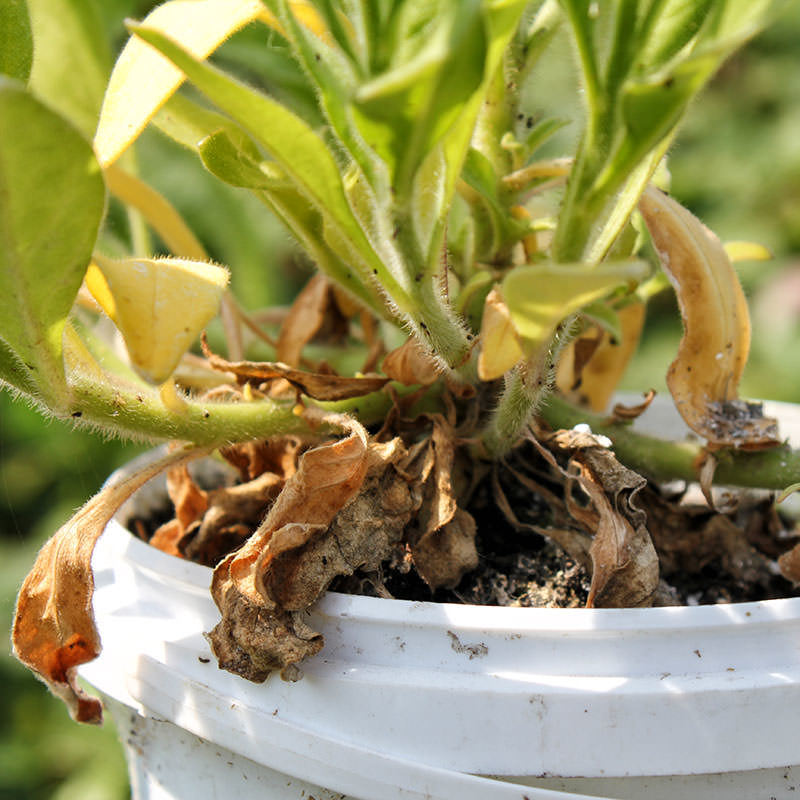
The roots and leaves begin to rot at the base. If left untreated, the flower will die. The healing procedure is similar to the previous illness. As a preventive measure, it is recommended to disinfect the soil before planting, and in the future, observe the irrigation regime.
Root worm
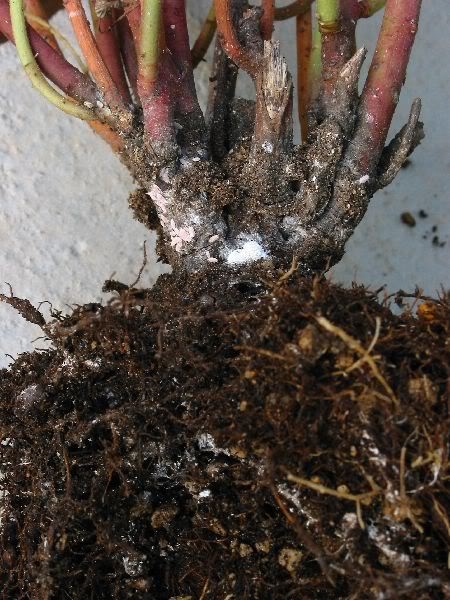
This pest affects the root, so the flower stops growing. The leaves become pale, shriveled and dry out. In this case, it is necessary to treat the plant with a solution of Aktara or Confidor according to the instructions for use. It is imperative to process the soil.To prevent infection, it is recommended to disinfect the soil and inspect the rhizome before planting, removing damaged ones.
Aphid
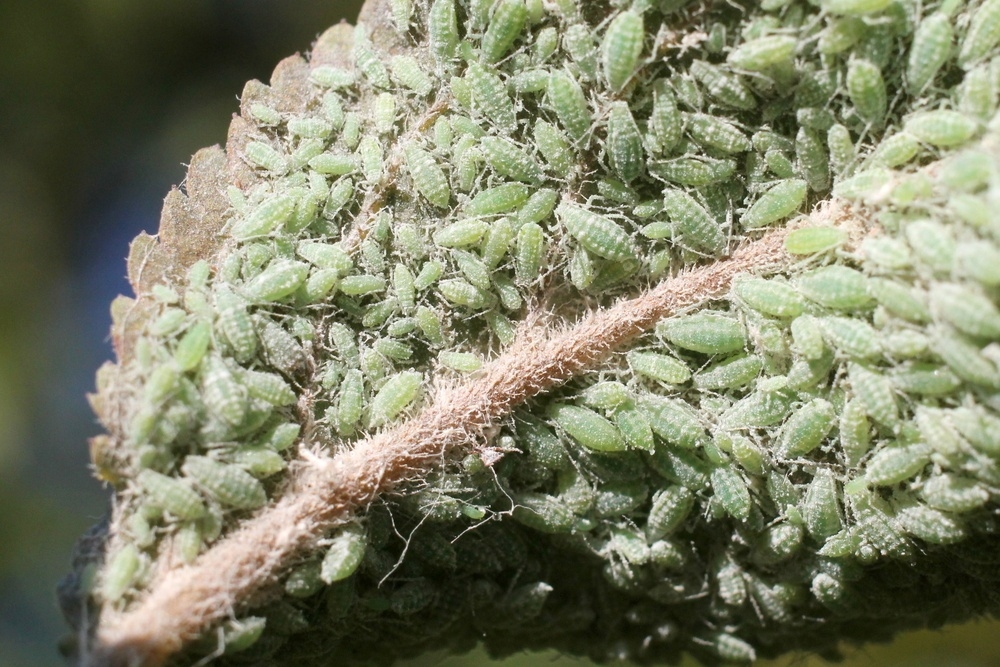
Aphids multiply rapidly and can kill the plant. In case of minor damage to pests, it can be washed off with a warm shower. If it is strong, ehmeya is sprayed with an insecticide (Neoron, Karate, Decis) and tied in a bag for 2-3 days. Aphids love high temperatures, so it is recommended to lower it.
Reproduction
Ehmeya reproduces in two ways - by seeds and daughter shoots. The second method is the easiest and most effective.
Daughter shoots
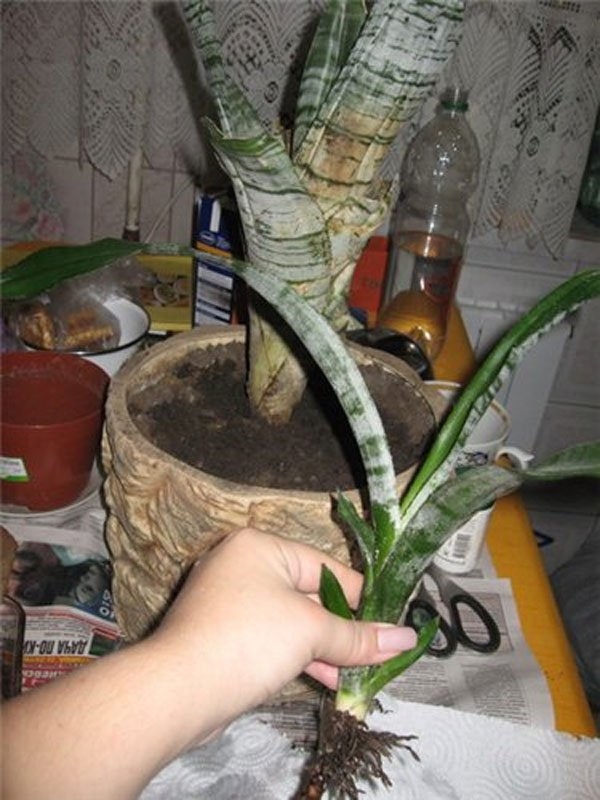
After flowering, daughter shoots begin to appear at the echmea. For transplanting, it is necessary that they are 1/2 of the size of the mother plant (at least 15 cm) and have their own root system. Procedure:
- Carefully remove the main plant with shoots from the pot.
- Separate the lateral processes with roots with a sharp, clean knife.
- Sprinkle the cut with crushed activated carbon and dry.
- Pour a mixture of 2 parts of leafy earth, 1 part of peat and 1 part of coarse sand into a container.
- Place the baby in the ground and cover with a plastic bag to create a greenhouse effect.
- Transfer the pot to a warm and bright place.
- After rooting, transplant the flower into a larger pot and care as usual.
Seeds
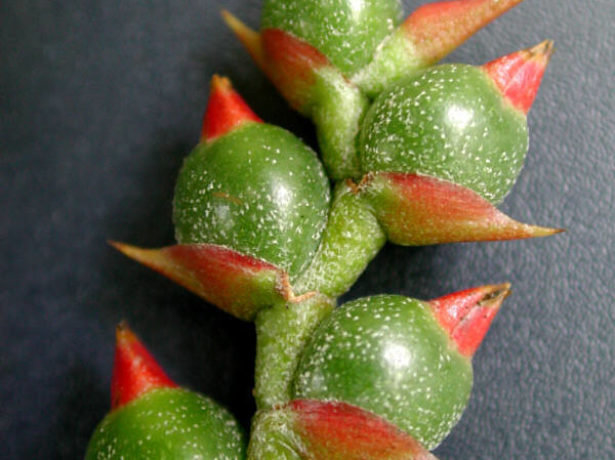
This is a more time consuming process and therefore less popular. Plants obtained from seeds may lose some of the characteristics of the variety. Procedure:
- Fill the planting container with peat, after crushing it.
- Plant the seeds not very deep.
- Cover with glass or a bag on top.
- The container should be removed to a place where the direct rays of the sun do not fall, water and ventilate regularly.
- The temperature should be between + 22-24 ° C.
- After 3 months, seedlings will appear. They are dived using a mixture of leafy and heather soil.
- Keep seedlings at a temperature of + 20-22 ° C, regularly watering and spraying them.
- After a year, the plants can be transplanted into soil for mature plants.
Ehmeya is a beautiful and unusual flower. In order for it to grow and bloom, it is necessary to maintain optimal conditions. Experienced flower growers speak only positively about him.

